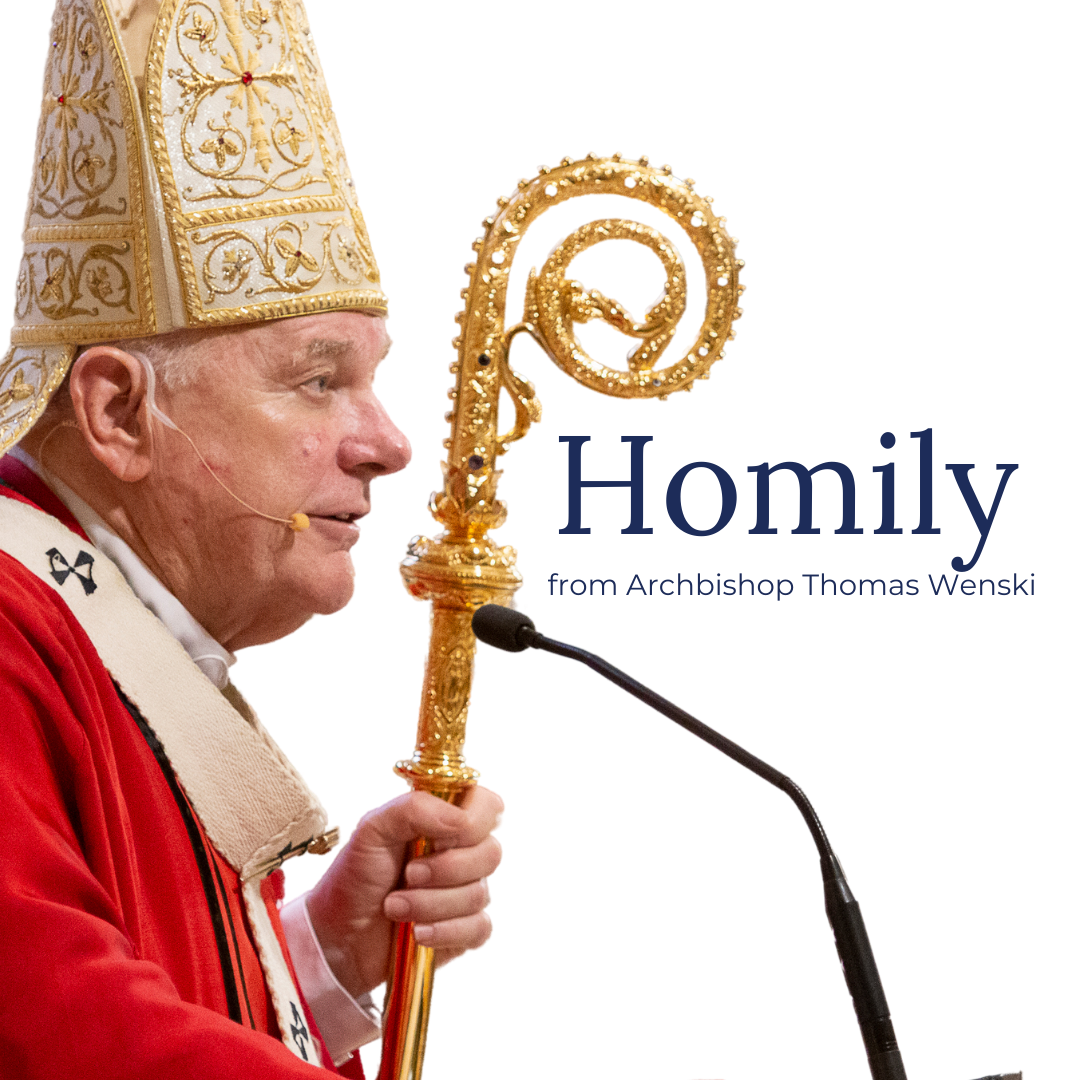By Archbishop Thomas Wenski - The Archdiocese of Miami
Homily by Archbishop Thomas Wenski at Cardinal Gibbons High School on the feast day of St. John Paul II. Oct. 22, 2025.
Once, in catechism class, a little child was asked “what is a saint?” In a perfect illustration of that phrase “from the mouths of babes”, he replied a bit hesitantly: “A saint is a - uh - window”. His experience of saints was of those depicted in the stained-glass windows of his parish church. But he had grasped a profound truth. Saints are indeed like windows – through them light shines, not the light of the sun but the light of the Son.
And in Karol Wojtyla, that light shone brightly! Karol Wojtyla was a Polish cardinal who was elected pope in 1978. He began his pontificate on October 22 and so when he was canonized as Pope Saint John Paul II this day, October 22nd, was chosen to be his feast day. He was Pope for 26 years.
As he once looked out on the multitudes from his window at the Vatican or from the many altars in the countries he visited, he now looks down from heaven’s window. And, we can say that he himself is a window through which the light of Christ continues to shine on us.
The Gospel reading tells us of Jesus’ encounter with Peter, the first Pope, after his resurrection. Jesus asked Peter three times: Peter, do you love me? And three times, Peter replied: Yes, Lord, you know that I love you. This triple affirmation of his love for Jesus contrasts with Peter's earlier denial of him three times on the eve of Jesus' Passion.
And after Jesus’ Resurrection and strengthen by the gift of the Holy Spirit, Peter’s love for Jesus led him to Rome where he preached the Gospel and where he died at the time of the persecution of Nero.
For Peter, Jesus' love was enough; it was the source of his joy and his love served as a template for him to pattern his own life on: keeping his word, obeying his commands, he came to share in God's life.
And Pope John Paul II, as successor of St. Peter, never tired of placing before us the radical demands of the gospel and he urged us not to be afraid to embrace them. By exhortation but also by example, an example given even with much pain and suffering, he reminded us that for a Christian “it would be a contradiction to settle for a life of mediocrity, marked by a minimalist ethic and a shallow religiosity.”
He canonized more saints than any Pope in history to underscore the fact that it is holiness which expresses best the mystery of the Church. Holiness is, he taught us, “a message that convinces without need for words and is a living reflection of the face of Christ.”
John Paul II, in his word and in his life, gave us a message that is convincing, a message of hope, a message about Jesus Christ, the source of our hope, the hope that does not disappoint.
The true disciple follows Jesus not because he is looking for miracles. Nor does he follow Jesus because he wants bread, or riches. A disciple follows Jesus because he loves Jesus. And if anyone loves Jesus, he will obey his teachings, he will "keep his word."
Love for Jesus involves both an attachment to him and a oneness with him and his interests, which naturally leads one to obey him and walk as he walked. One obeys what one loves. In fact, our patterns of obedience reveal what we really love.
In his youth, Karol Wojtyla was an athlete and a sports’ enthusiast. He played soccer, he skied, he kayaked. It would be curious to know what he thought of the new “extreme sports” now popularized on T.V.: “extreme” golf, “extreme” skiing, etc. As one pundit said: This Polish Pope invented a new sport: “Extreme holiness”. But for John Paul II, holiness was not just a pastime; it was the pursuit of his life. And it should be ours as well.

